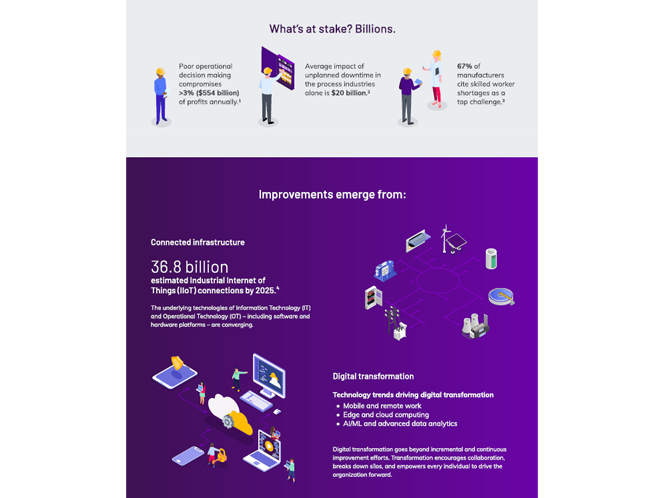Accelerate Operational Efficiency
It's becoming clear that to thrive, industrial businesses and municipal operations need to implement digital technologies that unify operational data and provide holistic and real-time access to the information needed to drive operational efficiency.
Unlocking knowledge of how plant operations impact the financial performance is challenging. Silos of information stored in various disparate data systems can make it virtually impossible to present a common view and align individual and group objectives with the business strategy.
In order to increase efficiency, it is imperative that organizations begin to automate tasks, enable greater collaboration, predict potential problems, and guide corrective actions to increase productivity, reduce waste and drive sustainable performance.
Operational Efficiency Use Cases
AVEVA offers unique approach to optimize the entire asset and operations life cycle by contextualizing asset performance with real-time process through enhanced situational awareness, asset prioritization based on risks and eliminating waste.

Increasing awareness throughout operations to drive better decisions
Get the right information is delivered to the right person at the right time and in the right context, enabling better and more informed decisions.

Minimizing waste while increasing effectiveness and productivity
Reduce process and quality losses, and minimize the environmental impact of industrial operations.

Prioritizing assets based on business risk
Make strategic decisions more confidently and cost effectively by developing a clear view of your asset availability, HSE compliance, productivity, and profitability.
Operational Efficiency as a Competitive Advantage
Rapid access to real-time information, presented visually and intuitively, empowers people to contribute to the profitability of the business. The ability to 'visualize your business' informs critical decisions and adjustments that directly impact your bottom line. The real value lies in the improved integration and collaboration across functional departments, enabling the sharing of information and coordination of daily activities and processes.

Customer Stories
Discover the Latest News and Resources
Check out the latest news, blogs, events, webinars, and success stories.


